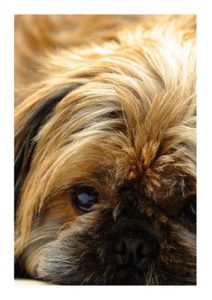Keeping your dog groomed does not just make him look good, it’s often better for his health. Without regular grooming, dogs with hair that continuously grows can end up with matted hair that can block their eyes, nose and mouth. Responsible owners keep a grooming schedule that keeps their pet looking neat and feeling good but do they indulge in creative grooming?

For competitions like the Westminster Dog Show, making the dogs’ coats gleam takes a lot of time and effort, with groomers that labor over their tasks. But way beyond such traditional grooming is a newer way to style your pet called creative grooming.
Creative Dog grooming probably started in the mid-1980s as simple dye jobs that turned white dogs into moving patches of a single color, but that turned out to just be the starting point. Fashion-conscious dog owners began experimenting with multiple dyes to create pictures or scenes on their pets and since then things have really taken off!
Various companies offer dyes formulated just for animals’ more sensitive skin. You can apply dye with an airbrush gun, a spray bottle or a creme chalk pen. There is pet glitter, hair glitz strands, feather extensions, crimping beads, stencils, nail polish and designer blades and clippers for sculpting hair and fur into waves, angles and shapes.

At these competitions, the dogs must stand for hours without moving. Groomers lose themselves in dyes and clippers, angles and shapes, tirelessly coaxing their vision out of the hair. An audience watches the images emerge and judges prepare to honor a winner. It takes all day.
At this point the furry friend seems to disappear as the art takes over.

If you have your dog creatively groomed, ask the groomer the following questions:
- How long have you been a creative groomer?
- What kind of training did you have?
- What brand of dye(s) do you use?
- What kinds of symptoms do you look for to make sure the dog isn’t having an allergic reaction?
- What kind of professional grooming tools do you use?
Return to pick up your dog at the time agreed upon, whether or not you’ve heard from the groomer. Not hearing from the groomer by the time agreed upon can be a sign that things haven’t gone as the groomer planned.
When it comes to dye, it’s mostly dogs with white fur that can be creatively groomed. Animal dyes are formulated to bond with fur, at least temporarily, and you can get a long-term, temporary color job with white fur. Dark fur cannot be colored the same way. In order for the dye to take, the fur must be colorless and it would be extremely hazardous to bleach a dog’s fur.
The danger is just as bad if not worse for cats. A cat’s liver lacks the ability to metabolize chemicals, so toxins can build in the cat’s body and cause health problems and poisoning. Please don’t use human coloring chemicals on your pets.

But even dyes developed just for animals can cause an allergic reaction. Having such chemicals on a dog’s body can cause itching which leads to scratching or shaking of the head. Excessive scratching or head shaking can cause sores, hematomas and blisters. If the dog experiences extreme discomfort or if it lasts long enough, it can cause behavioral changes.
Dyeing uses a lot of water and dyeing a dog’s head can get water in their ears. Dog ears are differently shaped than humans’ and it’s harder to get the water back out. If it stays in there, it can lead to infection.
And then there’s the argument that changing a dog’s color has a psychological effect. Dyeing changes the way a dog smells. This can be confusing to other dogs and to the dog itself. Maybe being green or pink brings attention the dog doesn’t want or makes people laugh at it. Can a dog tell when it’s being ridiculed? If it can, this is another risk of creative grooming.
Because of all these hazards, dyeing animals has been outlawed in Florida and Colorado. Floridians and Coloradans who feel the need to make their dog’s ears or paws blue and purple pay fines for breaking the law.
It’s a tricky thing to criticize someone who clearly adores her dog. The same creative grooming that one person says is an expression of love looks to someone else like abuse.
![12 Best Dog Foods for Toy Breeds [Buyer's Guide] 12 Best Dog Foods for Toy Breeds [Buyer's Guide]](https://shihtzuexpert.com/wp-content/uploads/2019/05/3-5.jpg)

![6 Best Dog Treadmills for 2023 [Buyer’s Guide] 6 Best Dog Treadmills for 2023 [Buyer’s Guide]](https://shihtzuexpert.com/wp-content/uploads/2019/04/Best-Dog-Treadmills-1.png)

